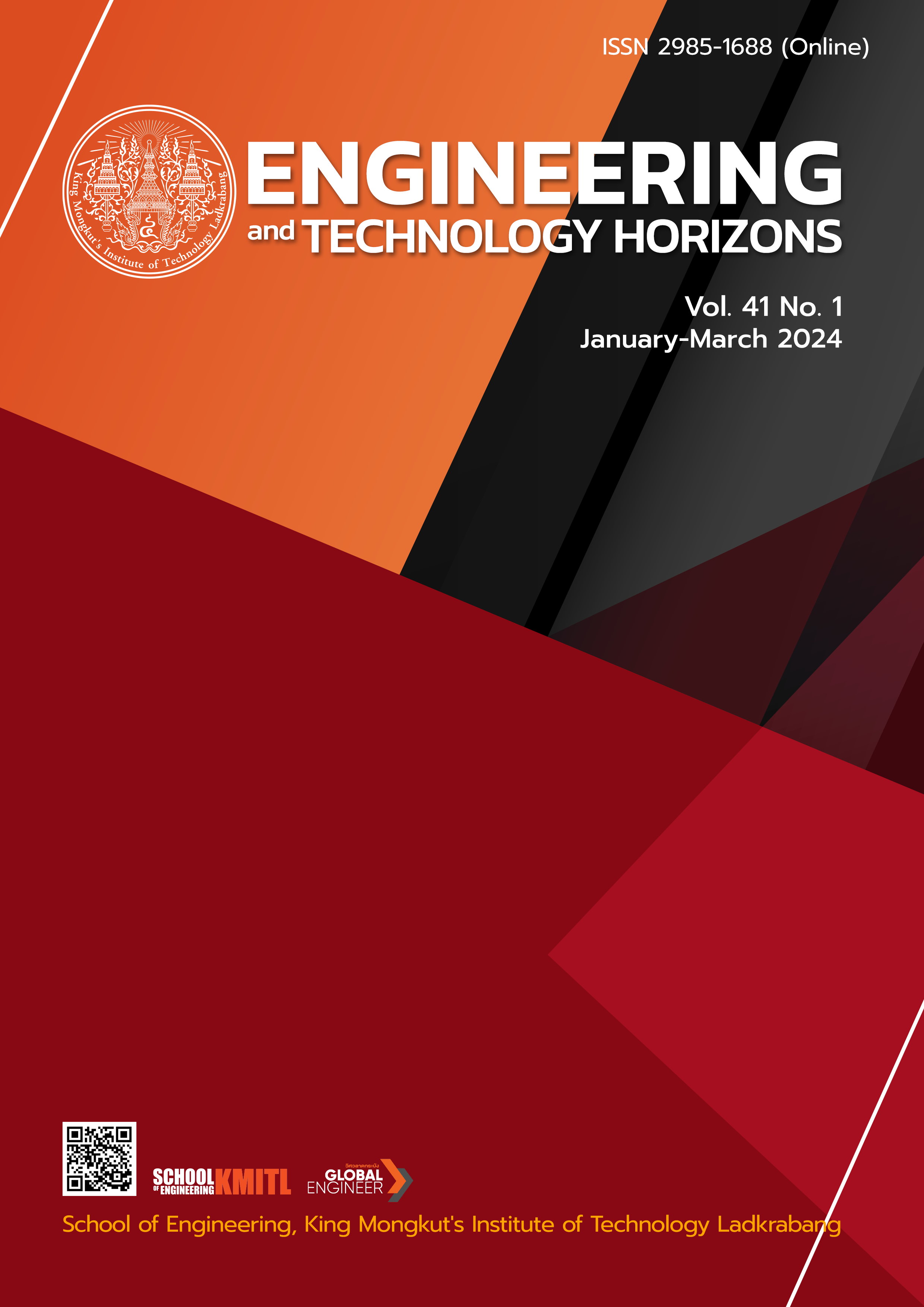The Attitudes of Pedestrians when Using Crosswalks with Distinct Traffic Lanes: A Case Study on Chaeng Watthana Road, Lat Krabang Road, and Kingkaeo Road
DOI:
https://doi.org/10.55003/ETH.410111Keywords:
Attitude, Crosswalk, PedestrianAbstract
One of the most important modes of transportation in cities and suburbs is walking. In large urban areas, walking reduces traffic congestion. However, data indicates that Bangkok is responsible for 1 in 3 pedestrian accidents per year, with an average of 900 such incidents taking place there. Furthermore, based on data collected from 2013 to 2017, car-pedestrian collisions are categorized by the highest severity index due to the average of 55 fatalities per 100 accidents. These statistics show that there are, on average, 740 pedestrian-vehicle incidents annually. The data indicates that to lower the number of pedestrian fatalities, walking mode needs to be enhanced. Consequently, the investigator was interested in determining how crossing facilities and people's attitudes are related. The goal of this research is to examine significant variables that influence how pedestrians feel about crossing the street. A questionnaire was used to collect data, which was separated into two sections: attitude about crossing the road and attitude regarding safety when crossing the road. The study's sample crosswalks are located on Chaeng Watthana Road, Lat Krabang Road, and King Kaew Road. Descriptive statistics and linear regression were employed in the analysis to consider social characteristics, variables related to past road crossing experience, variables regarding attitudes toward using road crossings, and variables regarding crossing facilities. Results from 412 questionnaires show that the number of traffic lanes, vehicle volume and vehicle speed were determined to be the primary factors significantly reducing the attitude of security that one feels when crossing the street. Furthermore, the outcomes held up when descriptive statistics were used for analysis. It was discovered that push-button traffic lights had the biggest influence on attitudes of safety when it came to attitudes regarding crossing facilities.
References
P. Kongkunakornkul. “Investigating the circumstances around ‘pedestrians’ in traffic accidents in Thailand.” thestandard.co. https://thestandard.co/walking-people-accident-in-thailand/ (accessed Dec. 13, 2023).
K. Fitzpatrick, B. Ullman and N. Trout, “On-Street Pedestrian Surveys of Pedestrian Crossing Treatments,” Institute of Transportation Engineers (ITE), Washington, DC, USA, Rep. TRB 2004, 2004. Accessed: Dec. 1, 2023 [Online]. Available: https://nacto.org/docs/usdg/on_street_pedestrian_survey_fitzpatrick.pdf
N. Panyavisutichai, “Student Attitudes toward Crosswalk Usages in School Zones,” M.S. thesis, Dept. Civil Eng., Chulalongkorn University, Bangkok, Thailand, 2019.
M. C. Diogenes and L. A. Lindau, “Evaluation of Pedestrian Safety at Midblock Crossings, Porto Alegre, Brazil.,” Transportation Research Record: Journal of the Transportation Research Board, vol. 2193, no. 1, pp. 37–43, 2010, doi: 10.3141/2193-05.
D. B. Kadali and D. P. Vedagiri, “Role of number of traffic lanes on pedestrian gap acceptance and risk-taking behaviour at uncontrolled crosswalk locations,” Journal of Transport & Health., vol. 19, 2020, Art. no. 100950, doi: 10.1016/j.jth.2020.100950.
E. Rosén and U. Sander, “Pedestrian fatality risk as a function of car impact speed,” Accident Analysis and Prevention, vol. 41, no. 3, pp. 536–542, 2009, doi: 10.1016/j.aap.2009.02.002.
S. Agarwal and D. Vikram, “Impact of vehicular traffic stream on pedestrian crossing behavior at an uncontrolled mid-block section,” Transportation Research Interdisciplinary Perspectives, vol. 9, 2021, Art. no. 100298, doi: 10.1016/j.trip.2021.100298.
H. D. Golakiya and A. Dhamaniya., “Evaluating LOS at Urban Midblock Section under the Influence of Crossing Pedestrians in Mixed Traffic Conditions,” Transportation Research Procedia, vol. 48, pp.777–792, 2020, doi: 10.1016/j.trpro.2020.08.079.
E. Papadimitriou, A. Theofilatos and G. Yannis, “Patterns of pedestrian attitudes, perceptions and behaviour in Europe,” Safety Science, vol. 53, p.114–122, 2013, doi:10.1016/j.ssci.2012.09.008.
T. A. Petritsch, B. W. Landis, P. S. McLeod, H. F. Huang, S. Challa and M. Guttenplan, “Level-of-Service Model for Pedestrians at Signalized Intersections,” Transportation Research Record: Journal of the Transportation Research Board, vol. 1939, no. 1, pp. 55–62, 2005, doi: 10.1177/0361198105193900107.
S. Bendak, A. M. Alnaqbi, M. Y. Alzarooni, S. M. Aljanaahi and S. J. Alsuwaidi, “Factors affecting pedestrian behaviors at signalized crosswalks: An empirical study,” Journal of Safety Research, vol. 76, pp. 269–275, 2021, doi: 10.1016/j.jsr.2020.12.019.
M. Albee and P. Bobitz, “Marking Our Roads Safer | One Countermeasure at a Time,” FHWA, Washington, DC, USA, Tech. Rep. FHWA-SA-21-071, 2021.
Downloads
Published
How to Cite
Issue
Section
License
Copyright (c) 2024 School of Engineering, King Mongkut’s Institute of Technology Ladkrabang

This work is licensed under a Creative Commons Attribution-NonCommercial-NoDerivatives 4.0 International License.
The published articles are copyrighted by the School of Engineering, King Mongkut's Institute of Technology Ladkrabang.
The statements contained in each article in this academic journal are the personal opinions of each author and are not related to King Mongkut's Institute of Technology Ladkrabang and other faculty members in the institute.
Responsibility for all elements of each article belongs to each author; If there are any mistakes, each author is solely responsible for his own articles.






